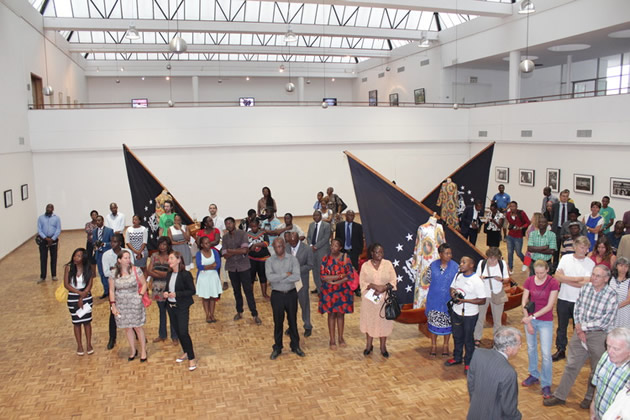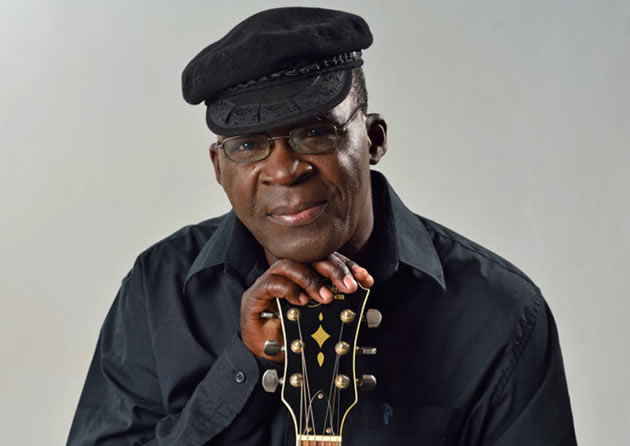African migration on spotlight in new exhibition

An exhibition titled “Kabbo Ka Muwala/ The Girl’s Basket” exhibition is underway at the National Gallery of Zimbabwe. The exhibition is based on migration and mobility in contemporary art in Southern and East Africa. It is a collaboration between National Gallery of Zimbabwe in Harare, Makerere University in Kampala and Städtische Galerie Bremen of Germany.
The title of the exhibition “Kabbo Ka Muwala/ The Girl’s Basket” is taken from an idiom in Luganda, a widely spoken language in central Uganda. The expression refers to a tradition known throughout East Africa in which a bride presents in a basket to her new family and her parents in turn.
“Metaphorically the basket represents expectations and hopes, but also disappointments and setbacks, which come with marriage and also with processes of migration. Pachizezuru chitundu chinoenda nemuroora,” said Melusi Matshiya, the Permanent Secretary in the Ministry of Home Affairs in a speech during the opening.
The travelling exhibition artistically explores perspectives on the multitude of migration processes in and from Southern and Eastern Africa primarily through the eyes of artistes from these regions.
The Permanent Secretary added that the graphic representation through these artworks serve as a means to inform people and educate them with regards to the risk and critical situations that they pose to fall into when they are displaced.
“In the realm of forced migration we consider art as central to addressing the causes of displacement as well as in the search for the affected,” explained Jelvas Musau, officer in charge at UNHCR Zimbabwe.
“In addition to providing panacea and emotional stress, artistic expression has the capacity to, among others; connect displaced communities to their culture and spiritually and hence give them a sense of value and identity; help in the preservation of culture; act as a bridge between the displaced and host communities.”
The exhibition focuses on photography, video art and performance and is representing artists’ perspectives. A wide range of media, including photo works, videos, mixed media and installations are offering alternative reflections to stereotypical representations of a mass migration to the global north.
The works on display show that issues on migration are manifested not simply as topics of artistic practise but also in terms of migratory aesthetics. The Kabbo Ka Muwala artists are said to have a bigger chance to make a change in the journey of migration because they have a bigger voice and also because they influence each other.
“Exhibitions are often first done in Europe before travelling to Africa,” said Raphael Chikukwa chief curator at the National Gallery of Zimbabwe.
“However, Kabbo Ka Muwala will begin at two traditional exhibition venues in Zimbabwe and Uganda before docking at the port city of Bremen.”
Zimbabwean artists taking part in this exhibition include Berry Bickle, Kudzanai Chiurai, Gerald Machona and The Border Farm Project, which is a collaboration between Zimbabwe and Zambia.
For Gerald and Kudzanai it is their first time to exhibit in Zimbabwe.
Kabbo Ka Muwala Exhibition was preceded with Harare Conversations whereby the participating artist took their time to share the whole idea on how they come up with works in line with migration.
The purpose of the conversation was to ensure artistic work that is positively associated with quality and participation in migration continuum, Diaspora experiences and cross-cutting topics that have numerous obvious references between them.
Kabbo Ka Muwala serves as a pointer of a number of experiences, there is going to be a two day conference as a support program for the exhibition.
The topic will be centred on the commemorations of International Women’s Day 2016, Women and migration, human trafficking, cross border traders and development. All this will explore the role played by women in this sector.
“This exhibition has set a platform for future exhibitions especially the one coming up in March about women’s day commemorations,” added Chikukwa.
The exhibition is running at the National Gallery until April 4, and in Uganda from April 14 to June 12 before moving to Germany from September 24 to December 11.











Comments